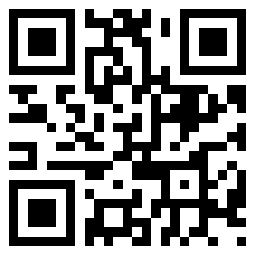水體毒性熒光儀ToxY-PAM
- 公司名稱 上海澤泉科技股份有限公司
- 品牌 其他品牌
- 型號
- 產地 進口
- 廠商性質 代理商
- 更新時間 2024/11/11 9:16:54
- 訪問次數 10735
聯(lián)系方式:沈經理15026947287 查看聯(lián)系方式
聯(lián)系我們時請說明是化工儀器網上看到的信息,謝謝!
| 產地類別 | 進口 | 應用領域 | 農業(yè) |
|---|
toxy-pam——水質總毒性分析熒光儀
schreiber教授因發(fā)明pam系列調制葉綠素熒光儀而獲得首屆光合作用協(xié)會(ispr)創(chuàng)新獎
為什么要用葉綠素熒光法測水質毒性?
| 水是生命之源,對維系人類生存和生物圈的正常運轉起著重要作用。但近年來水體受到的污染越來越嚴重,這不僅包括易引起富營養(yǎng)化甚至水華發(fā)生的外源營養(yǎng)鹽的輸入,而且包括各種環(huán)境激素濃度的逐漸升高。環(huán)境激素主要是指由于人類的生產和活動而釋放到環(huán)境中的能干擾人體和動物內分泌的化學物質,主要包括農藥及其降解產物、有機氯化物(二惡英、多氯聯(lián)苯等)、有機錫化合物、烷基酚類化合物、酚甲烷化合物、重金屬等。環(huán)境激素一般濃度較低,但它們可以通過生物濃縮、生物積累、生物放大等途徑實現(xiàn)對生物和人類的危害,可以干擾人類和動物的內分泌系統(tǒng)、免疫系統(tǒng)和神經系統(tǒng),出現(xiàn)各種各樣的異常癥狀。環(huán)境激素廣泛分布于生物圈內,可以隨地表徑流、降水以及排污等進入水體,對水生態(tài)系統(tǒng)產生嚴重影響。人類可以通過飲水、吃水產品或在水中娛樂而與環(huán)境激素接觸。因此,對水中環(huán)境激素進行檢測對保護國民健康具有重要意義。 |
目前分析水體中環(huán)境激素的方法主要是氣相色譜/質譜法(gc/ms)、液相色譜/質譜法(lc/ms)和等離子發(fā)射光譜/質譜法(icp/ms)等。這幾種方法的優(yōu)點是精密度高,而且可以對每種環(huán)境激素的含量分別做出精確測定;其缺點是儀器昂貴,樣品前處理復雜,操作需專業(yè)人員,操作費時,不能在野外現(xiàn)場進行,且很難對水體中的總環(huán)境激素做有效的估計。而在自然水體中通常是多種環(huán)境激素同時存在,同時這些環(huán)境激素的效應往往有疊加或拮抗作用,因此針對各種環(huán)境激素做的單獨分析很難正確評價它們對生物的毒性效應。要對水體的毒性進行快速、準確的評估,特別是突發(fā)事件發(fā)生時的迅速反應,上述3種方法很難滿足這方面的需求。
水體中的環(huán)境激素均能直接或間接抑制單細胞藻類的光合作用,其中多數除草劑就是通過抑制光合作用來達到除草目的的。葉綠素熒光技術是檢測活體植物光合作用變化的常規(guī)方法,其優(yōu)點是快速、靈敏、準確度高、且不破壞樣品的完整性。脈沖振幅調制(pam)葉綠素熒光儀是一種研究活體光合作用的儀器,國外自1990年代以來,陸續(xù)有人采用葉綠素熒光技術進行水中農藥殘留的檢測,并取得了較大進展,而國內尚無人利用單細胞藻類的光合作用來檢測環(huán)境激素。conrad等首先利用pam-101/102/103測量可變熒光的方法研究了用單胞藻檢測農藥含量的可行性,其檢測限為100 μg•l-1,遠遠高于歐盟對飲用水中總農藥含量不超過0.5 μg•l-1的標準。merschhemke和jensen利用pam-101/102/103測量葉綠素熒光和氧電極測光合放氧的方法,建立了一種自動藻類生物檢測系統(tǒng)(fluox),對萊茵河的水質進行連續(xù)監(jiān)測。它們以銅綠微囊藻為指示生物,發(fā)現(xiàn)對阿特拉津(atrazin)的檢測限為0.85 μg•l-1。snel等分別利用pam-101/102/103和xe-pam測量大型藻類和單細胞柵藻的電子傳遞速率以及量子產量的方法,來進行農藥的生物檢測,發(fā)現(xiàn)對利谷隆(linuron)的檢測限為0.5-2.5 μg•l-1。trapmann等以類囊體為指示生物,用pam-2000對飲用水進行了農藥殘留的生物檢測,他們以量子產量為指標,發(fā)現(xiàn)對dcmu(diuron,敵草隆)的檢測限為0.4 μg•l-1。
在以上這些研究的基礎上,
2001年,schreiber教授設計了一種用于檢測水中毒性物質的雙通道水體毒性熒光儀ToxY-PAM,稱為toxy-pam。以三角褐指藻為指示生物,toxy-pam對dcmu的檢測限達到甚至低于0.1 μg•l-1,這已可以滿足歐盟對飲用水中單種農藥含量不超過0.1 μg•l-1的標準。自從toxy-pam出現(xiàn)后,schreiber教授先后與歐盟institute for reference materials and measurements(iemm)和澳大利亞環(huán)境毒理研究中心(nrcet)合作,試圖將這種方法發(fā)展成為一種水質檢測的標準方法。目前他與nrcet的合作已取得顯著進展。他們在水樣測試前加了一個預濃縮步驟,從而將toxy-pam的檢測限提高到0.1 ng•l-1。
目前國內外對環(huán)境激素的檢測仍采用傳統(tǒng)的化學分析技術,盡管結果準確、靈敏度高,但儀器昂貴、耗時且不能現(xiàn)場操作。由于幾乎所有環(huán)境激素均可直接或間接抑制光合作用,因此以單細胞微藻為指示生物,利用水體毒性熒光儀ToxY-PAM對水體總毒性進行檢測,對于水中環(huán)境激素的快速現(xiàn)場檢測和預警具有重要意義。
特點與功能
1)雙通道熒光儀,以微藻為指示生物,檢測水中毒性物質(主要是環(huán)境激素)含量
2)可現(xiàn)場測量,測量迅速
3)指示生物(微藻)可自己培養(yǎng),方法簡單,造價極便宜
4)特別適合于水質預警
5)毒性物質以dcmu當量表示(類似于cod)
6)可單機操作,可連接電腦操作
7)可觀察毒性物質對指示生物抑制作用的動力學變化
測量參數
f1、fm1、y1、f2、fm2、y2、inh.%和dcmu當量等。
應用領域
以微藻為指示生物,檢測水中有毒物質(主要是環(huán)境激素)的含量(總毒性),主要應用于環(huán)境科學、水生生物學、水質預警、水域生態(tài)學、污染生態(tài)學、海洋學與湖沼學、毒理學等領域。
技術參數
測量光:藍色led,470 nm,標準光強10 μmol m-2 s-1 par,升高到高頻時光強可升高20倍
信號檢測:兩個pin光電二極管,帶選擇性鎖相放大器(設計)
飽和脈沖:藍色led,470 nm,持續(xù)時間0.4 s,強度2000
μmol m-2 s-1 par
微處理器:cmos 80c52
部分文獻
1. escher bi, bramaz n, mueller jf, quayle p, rutishauser s, vermeirssen elm: toxic equivalent concentrations (teqs) for baseline toxicity and specific modes of action as a tool to improve interpretation of ecotoxicity testing of environmental samples. journal of environmental monitoring 2008;10:612-621.
2. knauert s, knauer k: the role of reactive oxygen species in copper toxicity to two freshwater green algae. journal of phycology 2008;44:311-319.
3. lópez-rodas v, marvá f, rouco m, costas e, flores-moya a: adaptation of the chlorophycean dictyosphaerium chlorelloides to stressful acidic, mine metal-rich waters as result of pre-se-lective mutations. chemosphere 2008;72:703-707.
4. lópez-rodas v, perdigones n, marvá f, rouco m, garcía-cabrera ja: adaptation of phytoplankton to novel residual materials of water pollution: an experimental model analysing the evolution of an experimental microalgal population under formaldehyde contamination bulletin of environmental contamination and toxicology 2008;80:158-162.
5. magnusson m, heimann k, negri ap: comparative effects of herbicides on photosynthesis and growth of tropical estuarine microalgae marine pollution bulletin 2008;56:1545-1552.
6. muller r, schreiber u, escher bi, quayle p, nash smb, mueller jf: rapid exposure assessment of psii herbicides in surface water using a novel chlorophyll a fluorescence imaging assay science of the total environment 2008;401:1-3.
7. sánchez-fortún s, marvá f, d"ors a, costas e: inhibition of growth and photosynthesis of se-lected green microalgae as tools to evaluate toxicity of dodecylethyldimethyl-ammonium bromide ecotoxicology 2008;17:229-234.
8. vallotton n, eggen ril, chèvre n: effect of sequential isoproturon pulse exposure on scenedesmus vacuolatus archives of environmental contamination and toxicology 2008:in press.
9. 王麗, 應波, 鄂學禮: 水中敵草隆的葉綠素熒光檢測法. 環(huán)境與健康雜志 2008;25:539-541.
10. costas e, flores-moya a, perdigones n, maneiro e, blanco jl, garcía me, lópez-rodas v: how eukaryotic algae can adapt to the spain"s rio tinto: a neo-darwinian proposal for rapid adaptation to an extremely hostile ecosystem. new phytologist 2007;175:334-339.
11. knauer k, sobek a, bucheli td: reduced toxicity of diuron to the freshwater green alga pseudokirchneriella subcapitata in the presence of black carbon. aquatic toxicology 2007;83:143-148.
12. muller r, tang jy, thier r, mueller jf: combining passive sampling and toxicity testing for evaluation of mixtures of polar organic chemicals in sewage treatment plant effluent. journal of environmental monitoring 2007;9:104-109.
13. ralph pj, smith ra, macinnis-ng cmo, seery cr: use of fluorescence-based ecotoxicological bioassays in monitoring toxicants and pollution in aquatic systems: review toxicological & environmental chemistry, 2007;89:589-607.
14. bengtson nash sm, goddard j, muller jf: phytotoxicity of surface waters of the thames and brisbane river estuaries: a combined chemical analysis and bioassay approach for the comparison of two systems. biosensors and bioelectronics 2006;21:2086-2093.
15. seery cr, gunthorpe l, ralph pj: herbicide impact on hormosira banksii gametes measured by fluorescence and germination bioassays. environmental pollution 2006;140:43-51.
16. 王麗, 應波, 鄂學禮: 水質毒性分析熒光儀檢測水中毒性物質的應用. 衛(wèi)生研究 2006;35:254-256.
17. bengtson nash sm, mcmahon k, eaglesham g, muller jf: application of a novel phytotoxicity assay for the detection of herbicides in hervey bay and the great sandy straits. marine pollution bulletin 2005;51:351-360.
18. bengtson nash sm, quayle pa, schreiber u, muller jf: the se-lection of a model microalgal species as biomaterial for a novel aquatic phytotoxicity assay. aquatic toxicology 2005;72:315-326.
19. bengtson nash sm, schreiber u, ralph pj, müllera jf: the combined spe:toxy-pam phytotoxicity assay; application and appraisal of a novel biomonitoring tool for the aquatic environment. biosensors and bioelectronics 2005;20:1443-1451.
20. escher bi, bramaz n, eggen ril, richter m: in vitro assessment of modes of toxic action of pharmaceuticals in aquatic life. environmental science and technology 2005;39:3090-3100.
21. niederer c, behra r, harder a, schwarzenbach rp, escher bi: mechanistic approaches for evaluating the toxicity of reactive organochlorines and epoxides in green algae. environmental toxicology and chemistry 2004;23:697-704.
22. schreiber u, müller jf, haugg a, gademann r: new type of dual-channel pam chlorophyll fluorometer for highly sensitive water toxicity biotests. photosynthesis research 2002;74:317–330.








 采購中心
采購中心
 化工儀器網
化工儀器網